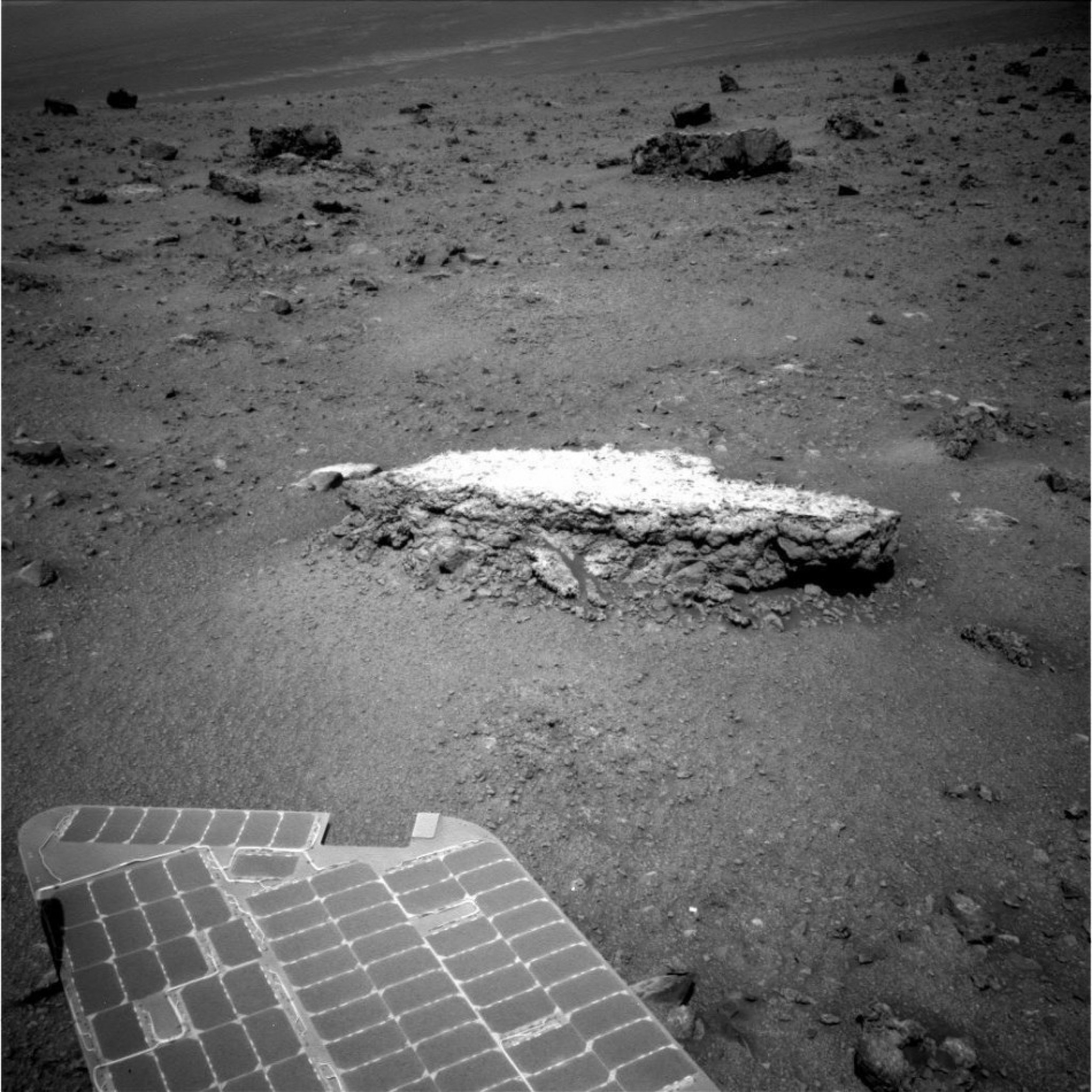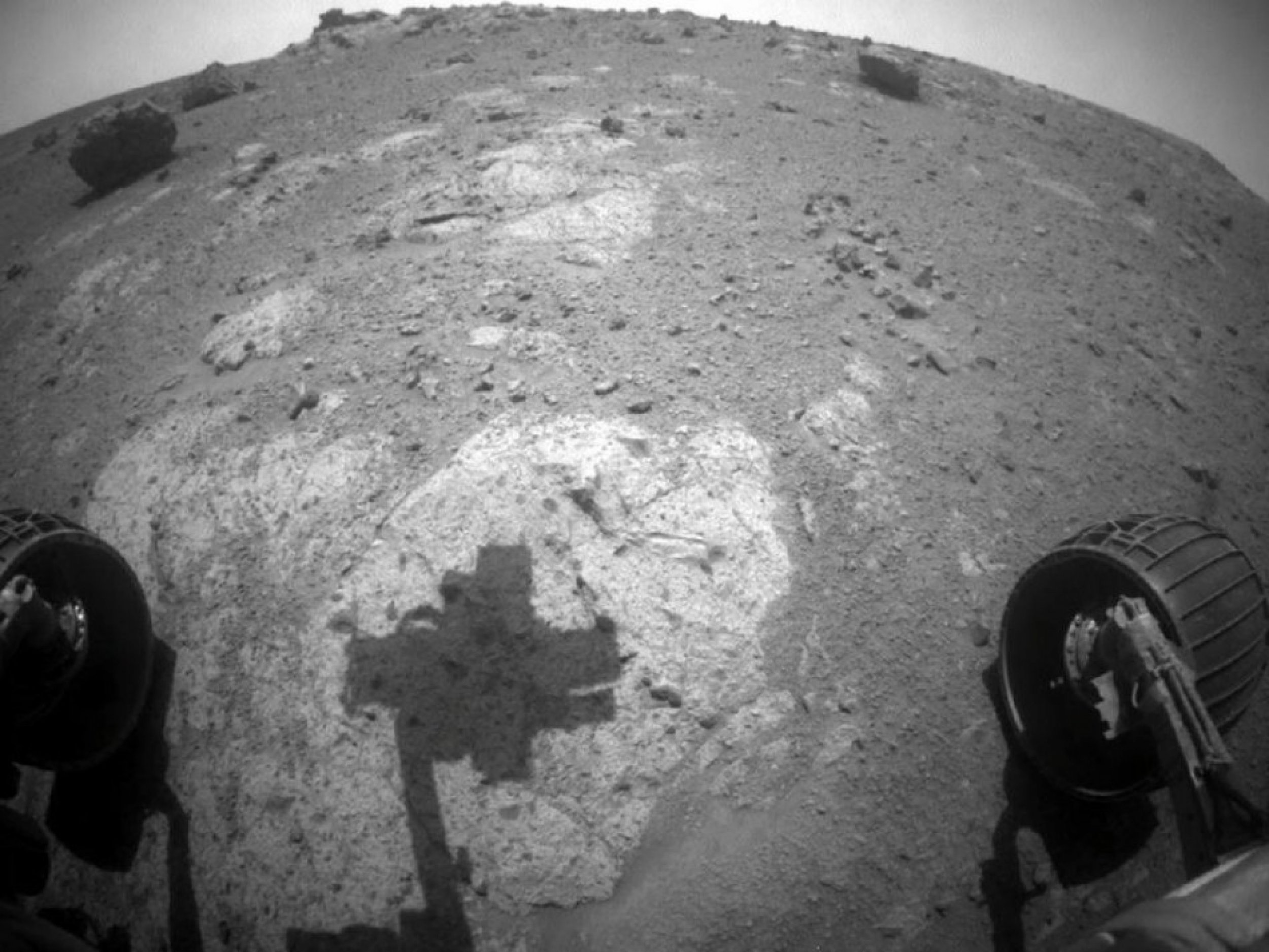NASA’s Rover Examines Second Rock at Mars’ Endeavour Crater [PHOTOS]
While on its mission to study rocks on Mars to get clues to possible ancient water, NASA's Mars Exploration Rover Opportunity is examining its second rock since landing reaching the Endeavour crater, in August.
The second rock, called Chester Lake, is an outcrop of bedrock while the first rock was a boulder ejected by excavation of a small crater, Odyssey, on Endeavour's rim, NASA said in a statement on Wednesday.
Unlike the first rock, nicknamed Tisdale 2, which is about 12 inches (30 centimeters) tall, Chester Lake is about 3 feet (1 meter) across.
Launched on Aug. 12, 2005, NASA’s Mars Exploration Orbiter and its two rovers, Opportunity and Spirit, have detected clay minerals at Endeavour crater, indicating an early wet environment favorable for microbial life.
NASA scientists said they will “reconstruct the chemistry, mineralogy and geologic setting of Chester Lake, including evidence about whether or not the rock has any clay minerals in its composition.”
Opportunity arrived at the rim of Endeavour crater on Aug. 9, 2011, three years after departing from its previous site, Victoria crater, to examine rocks believed to contain clay minerals.
The rocks at the Endeavour crater are believed to be much more ancient than those studied before.
“The rocks at Endeavour apparently come from an earlier period of Martian history than the rocks that Opportunity examined during its first seven-and-a-half years on Mars,” NASA said referring to the two rocks being inspected by Opportunity on the Endeavour rim.
Several signs that water flowed on Mars have been discovered in the recent past. Scientists speculate that water may have supported microbial life on the Red Planet.
As Opportunity continues its operations to find clues to wet environments on ancient Mars at the Endeavour crater, have a look at the pictures of the two rocks, Tisdale 2 and Chester Lake, released by NASA.
Also View:
Latest Pictures: Planet Mars You Never Saw Before
Top 10 Past Findings that Suggested Evidence of Water on Mars (PHOTOS)



© Copyright IBTimes 2024. All rights reserved.





















